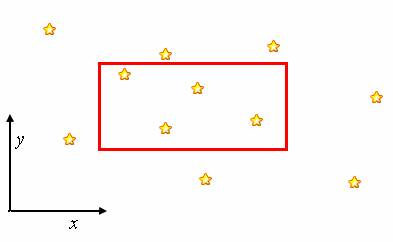《Erlang程序设计》一书中的附录A指导了程序文档的写法,通过在注释行中添加“@spec”或者“@type”等标注来对程序中的函数参数、返回值等类型来进行说明。这种方法可以使用,但是有新的标注方式,书中没有提到,记录再次备忘。
文中提到的dialyzer提供了静态代码监测工具,已经在IDEA中使用了,可以帮助检查一些明显的语法错误和手误。
1.函数参数重载的参数声明说明。注意不是参数重载,而是spec声明可以重载。
2.record用法
Erlang类型及函数声明规格 Author: Mail: Date: Copyright:
| litaocheng |
| litaocheng@gmail.com |
| 2009.6.8 |
| This document has been placed in the public domain. |
Contents
- 概述
- 意义
- 规范
- 类型及其定义语法
- 自定义类型定义
- 在record中使用类型声明
- 函数规范定义
- 使用dialyzer进行静态分析
- 生成plt
- 使用dialyzer分析
- 参考
Erlang为动态语言,变量在运行时动态绑定,这对于我们获取函数的参数及返回值的类型信息具有一定的难度。 为了弥补这个不足,在Erlang中我们可以通过type及spec定义数据类型及函数原型。通过这些信息,我们对函数及调用进行静态检测, 从而发现一些代码中问题。同时,这些信息也便于他人了解函数接口,也可以用来生成文档。
- 定义各种自定义数据类型
- 定义函数的参数及返回值
- dialyzer 进行代码静态分析
- edoc利用这些信息生成文档
类型及其定义语法
数据类型由一系列Erlang terms组成,其有各种基本数据类型组成(如 integer() , atom() , pid() )。Erlang预定义数据类型代表属于此类型的所有数据,比如 atom() 代表所有的atom类型的数据。
数据类型,由基本数据类型及其他自定义数据类型组成,其范围为对应数据类型的合集。 比如:
atom() | 'bar' | integer() | 42
与:
atom() | integer()
具有相同的含义。
各种类型之间具有一定的层级关系,其中最顶层的 any() 可以代表任何Erlang类型, 而最底层的 none() 表示空的数据类型。
预定义的类型及语法如下:
Type :: any() %% 最顶层类型&#xff0c;表示任意的Erlang term| none() %% 最底层类型&#xff0c;不包含任何term| pid()| port()| ref()| [] %% nil| Atom| Binary| float()| Fun| Integer| List| Tuple| Union| UserDefined %% described in Section 2Union :: Type1 | Type2Atom :: atom()| Erlang_Atom %% &#39;foo&#39;, &#39;bar&#39;, ...Binary :: binary() %% <<_:_ * 8>>| <<>>| <<_:Erlang_Integer>> %% Base size| <<_:_*Erlang_Integer>> %% Unit size| <<_:Erlang_Integer, _:_*Erlang_Integer>>Fun :: fun() %% 任意函数| fun((...) -> Type) %% 任意arity, 只定义返回类型| fun(() -> Type)| fun((TList) -> Type)Integer :: integer()| Erlang_Integer %% ..., -1, 0, 1, ... 42 ...| Erlang_Integer..Erlang_Integer %% 定义一个整数区间List :: list(Type) %% 格式规范的list (以[]结尾)| improper_list(Type1, Type2) %% Type1&#61;contents, Type2&#61;termination| maybe_improper_list(Type1, Type2) %% Type1 and Type2 as aboveTuple :: tuple() %% 表示包含任意元素的tuple| {}| {TList}TList :: Type| Type, TList
由于 lists 经常使用&#xff0c;我们可以将 list(T) 简写为 [T] &#xff0c;而 [T, ...] 表示一个非空的元素类型为T的规范列表。两者的区别是 [T] 可能为空&#xff0c;而 [T, ...] 至少包含一个元素。
&#39;_&#39; 可以用来表示任意类型。
请注意, list()表示任意类型的list&#xff0c;其等同于 [_]或[any()], 而 [] &#xff0c;仅仅 表示一个单独的类型即空列表。
为了方便&#xff0c;下面是一个内建类型列表
Built-in type Stands for
term() any() bool() &#39;false&#39; | &#39;true&#39; byte() 0..255 char() 0..16#10ffff non_neg_integer() 0.. pos_integer() 1.. neg_integer() ..-1 number() integer() | float() list() [any()] maybe_improper_list() maybe_improper_list(any(), any()) maybe_improper_list(T) maybe_improper_list(T, any()) string() [char()] nonempty_string() [char(),...] iolist() maybe_improper_list(char() | binary() | iolist(), binary() | []) module() atom() mfa() {atom(),atom(),byte()} node() atom() timeout() &#39;infinity&#39; | non_neg_integer() no_return() none()
类型定义不可重名&#xff0c;编译器可以进行检测。
注意 : 还存在一些其他 lists 相关的内建类型&#xff0c;但是因为其名字较长&#xff0c;我们很少使用:
nonempty_maybe_improper_list(Type) :: nonempty_maybe_improper_list(Type, any())
nonempty_maybe_improper_list() :: nonempty_maybe_improper_list(any())
我们也可以使用record标记法来表示数据类型:
Record :: #Erlang_Atom{}| #Erlang_Atom{Fields}
当前R13B中&#xff0c;已经支持record定义中的类型说明
自定义类型定义
通过前一章节的介绍&#xff0c;我们知道基本的类型语法为一个atom紧随一对圆括号。如果我们想 第一个一个新类型&#xff0c;需要使用 &#39;type&#39; 关键字:
-type my_type() :: Type.
my_type为我们自定义的type名称&#xff0c;其必须为atom&#xff0c;Type为先前章节介绍的各种类型&#xff0c; 其可以为内建类型定义&#xff0c;也可以为可见的&#xff08;已经定义的&#xff09;自定义数据类型。否则会 编译时保错。
这样递归的类型定义&#xff0c;当前还不支持。
类型定义也可以参数化&#xff0c;我们可以在括号中包含类型&#xff0c;如同Erlang中变量定义&#xff0c; 这个参数必须以大写字母开头&#xff0c;一个简单的例子:
-type orddict(Key, Val) :: [{Key, Val}].
在record中使用类型声明
我们可以指定record中字段的类型&#xff0c;语法如下:
-record(rec, {field1 :: Type1, field2, field3 :: Type3}).
如果字段没有指明类型声明&#xff0c;那么默认为 any() . 比如&#xff0c;上面的record定义与此相同:
-record(rec, {field1 :: Type1, field2 :: any(), field3 :: Type3}).
如果我们在定义record的时候&#xff0c;指明了初始值&#xff0c;类型声明必须位于初始值之后:
-record(rec, {field1 &#61; [] :: Type1, field2, field3 &#61; 42 :: Type3})$
我们可以指定record中字段的类型&#xff0c;语法如下::-record(rec, {field1 :: Type1, field2, field3 :: Type3}).
如果字段没有指明类型声明&#xff0c;那么默认为 any() . 比如&#xff0c;上面的record定义与此相同:
-record(rec, {field1 :: Type1, field2 :: any(), field3 :: Type3}).
如果我们在定义record的时候&#xff0c;指明了初始值&#xff0c;类型声明必须位于初始值之后:
-record(rec, {field1 &#61; [] :: Type1, field2, field3 &#61; 42 :: Type3}).
如果初始值类型与字段的类型声明不一致&#xff0c;会产生一个编译期错误。 filed的默认值为 &#39;undefined&#39; &#xff0c;因此下面的来个record定义效果相同:
-record(rec, {f1 &#61; 42 :: integer(),f2 :: float(),f3 :: &#39;a&#39; | &#39;b&#39;).-record(rec, {f1 &#61; 42 :: integer(),f2 :: &#39;undefined&#39; | float(),f3 :: &#39;undefined&#39; | &#39;a&#39; | &#39;b&#39;).
所以&#xff0c;推荐您在定义record时&#xff0c;指明初始值。
record定义后&#xff0c;我们可以作为一个类型来使用&#xff0c;其用法如下:
#rec{}
在使用recored类型时&#xff0c;我们也可以重新指定某个field的类型:
#rec{some_field :: Type}
没有指明的filed&#xff0c;类型与record定义时指明的类型相同。
函数规范定义
函数规范可以通过新引入的关键字 &#39;spec&#39; 来定义&#xff08;摒弃了旧的 &#64;spec 声明)。 其语法如下:
-spec Module:Function(ArgType1, ..., ArgTypeN) -> ReturnType.
函数的参数数目必须与函数规范定义相同&#xff0c;否则编译出错。
在同一个module内部&#xff0c;可以简化为:
-spec Function(ArgType1, ..., ArgTypeN) -> ReturnType.
同时&#xff0c;为了便于我们生成文档&#xff0c;我们可以指明参数的名称:
-spec Function(ArgName1 :: Type1, ..., ArgNameN :: TypeN) -> RT.
函数的spec声明可以重载。通过 &#39;;&#39; 来实现:
-spec foo(pos_integer()) -> pos_integer(); (integer()) -> integer().
我们可以通过spec指明函数的输入和输出的某些关系:
-spec id(X) -> X.
但是&#xff0c;对于上面的spec&#xff0c;其对输入输出没有任何限定。我们可以对返回值增加一些类似guard的限定:
-spec id(X) -> X when is_subtype(X, tuple()).
其表示X为一个tuple类型。目前仅仅支持 is_subtype 是唯一支持的guard。
某些情况下&#xff0c;有些函数是server的主循环&#xff0c;或者忽略返回值&#xff0c;仅仅抛出某个异常&#xff0c;我们可以使用 no_return() 作为返回值类型:
-spec my_error(term()) -> no_return().
my_error(Err) -> erlang:throw({error, Err}).
我们定义了type及spec&#xff0c;我们可以使用 dialyzer 对代码进行静态分析&#xff0c;在运行之前发现 很多低级或者隐藏的错误。
生成plt
为了分析我们的app或者module&#xff0c;我们可以生成一个plt文件&#xff08;Persistent Lookup Table&#xff09;&#xff0c; 其目的是为了加速我们的代码分析过程&#xff0c;plt内部很多类型及函数信息。
首先我们生成一个常用的plt文件, 其包含了以下lib&#xff1a;erts, kernel, stdlib, mnesia, crypto, sasl&#xff0c; ERL_TOP为erlang的安装目录&#xff0c;各个lib因为erlang版本不同会有所差别&#xff0c;我当前使用R13B(erl 5.7.1):
dialyzer --build_plt -r $ERL_TOP/lib/erts-5.7.1/ebin \$ERL_TOP/lib/kernel-2.13.1/ebin \$ERL_TOP/lib/stdlib-1.16.1/ebin \$ERL_TOP/lib/mnesia-4.4.9/ebin \$ERL_TOP/lib/crypto-1.6/ebin \$ERL_TOP/lib/sasl-2.1.6/ebin
经过十几分钟的的等待&#xff0c;生成了一个~/.dialyzer_plt文件&#xff0c;在生成plt时&#xff0c;可以通过--output_plt 指定生成的plt的名称。
我们也可以随时通过: dialyzer --add_to_plt --plt ~/.dialyzer_plt -c path_to_app 添加应用到既有plt中&#xff0c; 也可以通过: dialyzer --remove_from_plt --plt ~/.dialyzer_plt -c path_to_app 从已有plt中删除某个应用。
例子:
% 生成plt
dialyzer --build_plt -r /usr/local/lib/erlang/lib/erts-5.7.1/ebin \/usr/local/lib/erlang/lib/kernel-2.13.1/ebin \/usr/local/lib/erlang/lib/stdlib-1.16.1/ebin \/usr/local/lib/erlang/lib/mnesia-4.4.9/ebin \/usr/local/lib/erlang/lib/crypto-1.6/ebin \/usr/local/lib/erlang/lib/sasl-2.1.6/ebin% 从plt中去处crypto应用
dialyzer --remove_from_plt --plt ~/.dialyzer_plt -c /usr/local/lib/erlang/lib/crypto-1.6/ebin% 向plt中添加crypto应用
dialyzer --add_to_plt --plt ~/.dialyzer_plt -c /usr/local/lib/erlang/lib/crypto-1.6/ebin
使用dialyzer分析
生成plt后&#xff0c;就可以对我们书写的应用进行静态检查了。
假设我们书写一个简单的module&#xff08;spec/spec.erl):
-module(spec).
-compile([export_all]).
-vsn(&#39;0.1&#39;).-spec index(any(), pos_integer(), [any()]) -> non_neg_integer().
index(Key, N, TupleList) ->index4(Key, N, TupleList, 0).index4(_Key, _N, [], _Index) -> 0;
index4(Key, N, [H | _R], Index) when element(N, H) &#61;:&#61; Key -> Index;
index4(Key, N, [_H | R], Index) -> index4(Key, N, R, Index &#43; 1).% correct:
%-spec fa( non_neg_integer() ) -> pos_integer().
% invalid:
-spec fa( N :: atom() ) -> pos_integer().
fa(0) -> 1;
fa(1) -> 1;
fa(N) -> fa(N-1) &#43; fa(N-2).-spec some_fun() -> any().
some_fun() ->L &#61; [{bar, 23}, {foo, 33}],lists:keydelete(1, foo, L).
编译spec.erl:
erlc &#43;debug_info spec.erl
使用dialyzer进行分析:
dialyzer -r ./spec
显示结果:
Checking whether the PLT /home/litao/.dialyzer_plt is up-to-date... yes
Proceeding with analysis...
spec.erl:15: Invalid type specification for function &#39;spec&#39;:fa/1. The success typing is (non_neg_integer()) -> pos_integer()
spec.erl:22: Function some_fun/0 has no local return
spec.erl:24: The call lists:keydelete(1,&#39;foo&#39;,L::[{&#39;bar&#39;,23} | {&#39;foo&#39;,33},...]) will never return since it differs in argument position 2 from the success typing arguments: (any(),pos_integer(),maybe_improper_list())
done in 0m0.29s
done (warnings were emitted)
我们可以看到,我们的fa/1函数的spec信息错误&#xff0c;我们进行修正:
由
-spec fa( non_neg_integer() ) -> pos_integer().
改为:
-spec fa( N :: atom() ) -> pos_integer().
some_fun中&#xff0c;lists:keydelete/3参数顺序进行修改:
lists:keydelete(1, foo, L).
改为:
lists:keydelete(foo,1, L).
重新编译&#xff0c;进行dialyzer分析&#xff0c;提示成功:
litao&#64;litao:~/erltest$ dialyzer -r ./spec
Checking whether the PLT /home/litao/.dialyzer_plt is up-to-date... yes
Proceeding with analysis... done in 0m0.28s
done (passed successfully)
| [1] | EEP 8,Types and function specifications (http://www.erlang.org/eeps/eep-0008.html ) |
| [2] | reRestructureText (http://docutils.sourceforge.net/docs/user/rst/quickref.html ) |
| [3] | dialyzer (http://www.erlang.org/doc/man/dialyzer.html ) |







 京公网安备 11010802041100号
京公网安备 11010802041100号